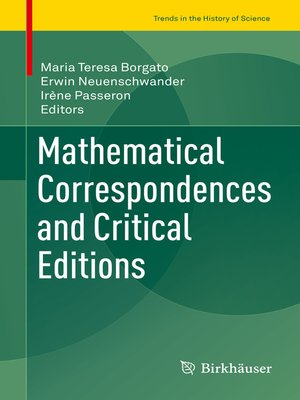Mathematical Correspondences and Critical Editions
ebook ∣ Trends in the History of Science
By Maria Teresa Borgato

Sign up to save your library
With an OverDrive account, you can save your favorite libraries for at-a-glance information about availability. Find out more about OverDrive accounts.
Find this title in Libby, the library reading app by OverDrive.



Search for a digital library with this title
Title found at these libraries:
| Library Name | Distance |
|---|---|
| Loading... |
Mathematical correspondence offers a rich heritage for the history of mathematics and science, as well as cultural history and other areas. It naturally covers a vast range of topics, and not only of a scientific nature; it includes letters between mathematicians, but also between mathematicians and politicians, publishers, and men or women of culture.
Wallis, Leibniz, the Bernoullis, D'Alembert, Condorcet, Lagrange, Gauss, Hermite, Betti, Cremona, Poincaré and van der Waerden are undoubtedly authors of great interest and their letters are valuable documents, but the correspondence of less well-known authors, too, can often make an equally important contribution to our understanding of developments in the history of science.
Mathematical correspondences also play an important role in the editions of collected works, contributing to the reconstruction of scientific biographies, as well as the genesis of scientific ideas, and in the correct dating and interpretation of scientific writings.
This volume is based on the symposium "Mathematical Correspondences and Critical Editions," held at the 6th International Conference of the ESHS in Lisbon, Portugal in 2014. In the context of the more than fifteen major and minor editions of mathematical correspondences and collected works presented in detail, the volume discusses issues such as







